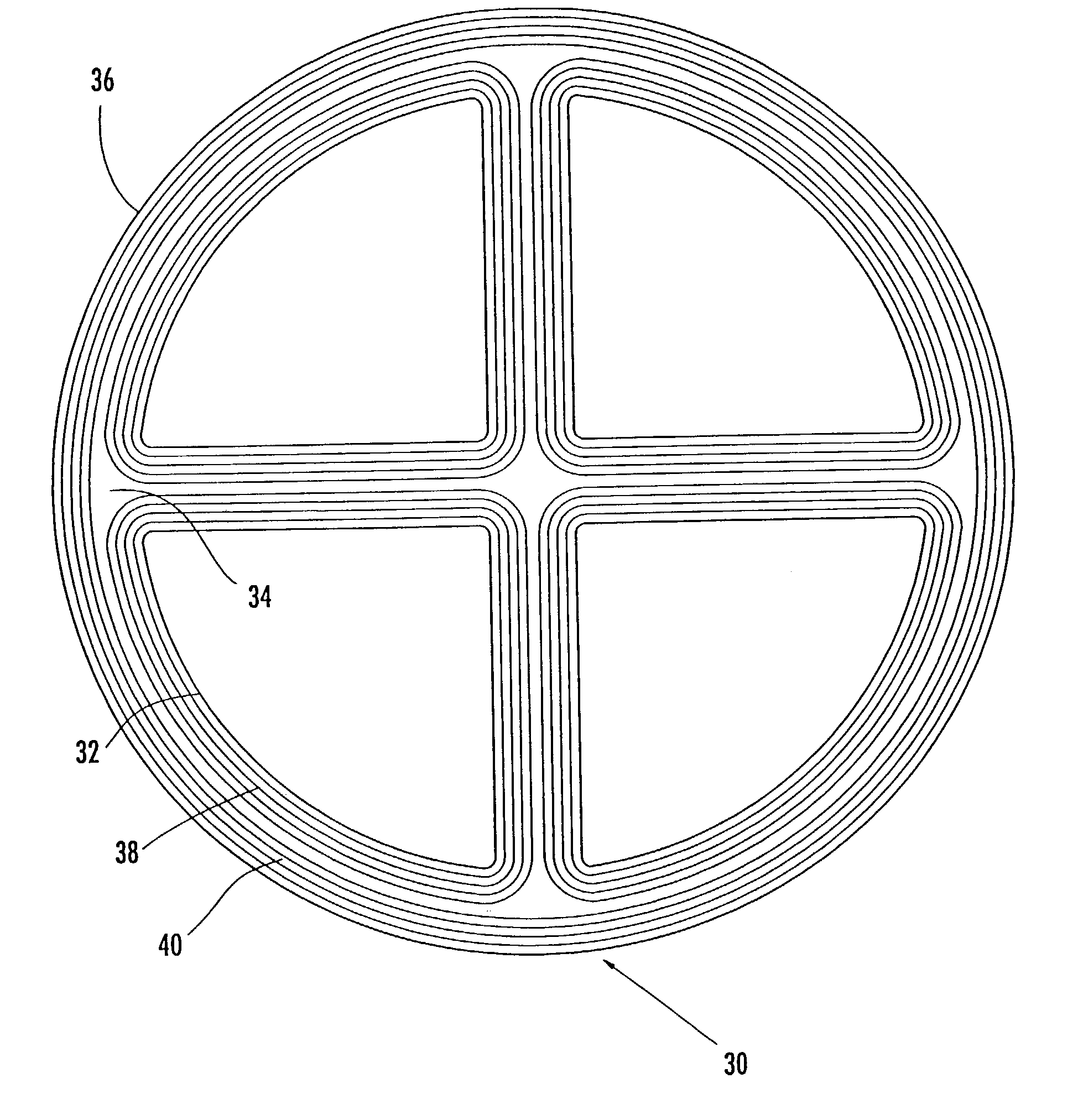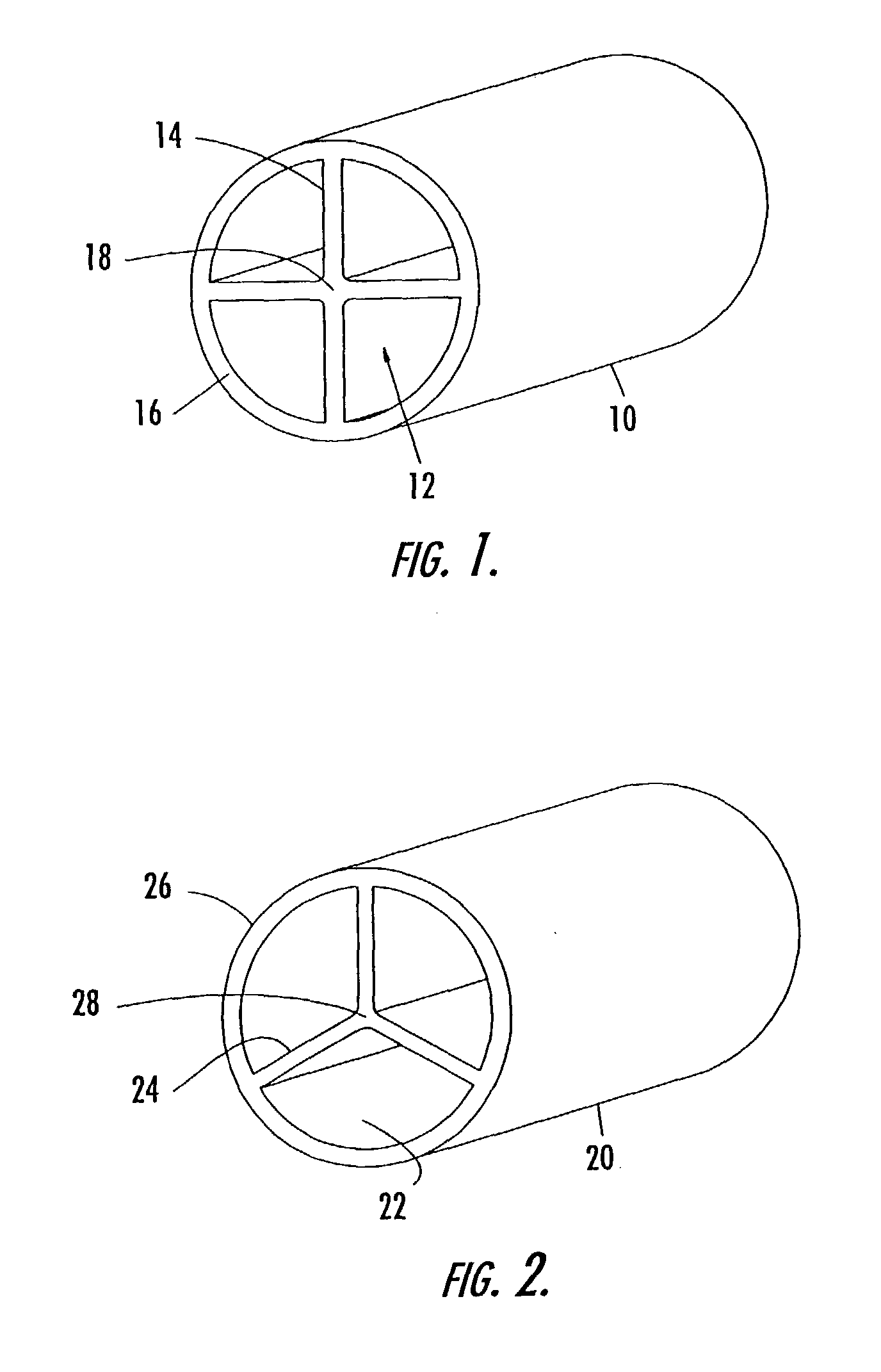Method of fabricating a damage tolerant shaft
a technology of damage tolerance and shaft, which is applied in the field of shafts, can solve the problems of accidental damage that the drive shaft must withstand damage to the composite materials, and the potential damage to the drive shaft, so as to achieve the effect of increasing the radius, wall thickness and/or weight of the drive shaft, and adding the strength of the sha
- Summary
- Abstract
- Description
- Claims
- Application Information
AI Technical Summary
Benefits of technology
Problems solved by technology
Method used
Image
Examples
Embodiment Construction
[0026]The present invention now will be described more fully hereinafter with reference to the accompanying drawings, in which preferred embodiments of the invention are shown. This invention may, however, be embodied in many different forms and should not be construed as limited to the embodiments set forth herein; rather, these embodiments are provided so that this disclosure will be thorough and complete, and will fully convey the scope of the invention to those skilled in the art. Like numbers refer to like elements throughout.
[0027]The damage tolerant shaft 10 according to one embodiment of the present invention is depicted in FIG. 1. As shown, the shaft includes an annular body 16 that is symmetrical about an axis and ribs 14 that extend inwardly from the annular body 16. The axis generally extends lengthwise through the annular body 16 at a location coincident with the center of the annular body 16. The ribs 14 also extend lengthwise along the annular body 16 and connect with...
PUM
| Property | Measurement | Unit |
|---|---|---|
| angles | aaaaa | aaaaa |
| angles | aaaaa | aaaaa |
| torque | aaaaa | aaaaa |
Abstract
Description
Claims
Application Information
 Login to View More
Login to View More - R&D
- Intellectual Property
- Life Sciences
- Materials
- Tech Scout
- Unparalleled Data Quality
- Higher Quality Content
- 60% Fewer Hallucinations
Browse by: Latest US Patents, China's latest patents, Technical Efficacy Thesaurus, Application Domain, Technology Topic, Popular Technical Reports.
© 2025 PatSnap. All rights reserved.Legal|Privacy policy|Modern Slavery Act Transparency Statement|Sitemap|About US| Contact US: help@patsnap.com



